Weaving Back Community and Culture A Handloom Research and Training Centre | Ramisa Tasnim

Handloom, a craft from ancient times, brought forth one of the largest industries in Bangladesh. Despite having been a special contributor to its economy, this field has been languishing. From the clattering kotkoti taat (drawloom) to the painstaking komor taat (backstrap loom), it is an integral part of the culture that is seen to be overshadowed by more speedy and mechanical processes.
Eduwik Architecture Excellence Awards 2022 (Students)
Second Award | Cultural
Project Name: Weaving Back Community and Culture: A Handloom Research and Training Centre
Project Category: Cultural
Studio Name: Student project (Thesis)
Design Team: Ramisa Tasnim
Area: 150,000 sqft
Year: 2021
Location: Rangamati, Bangladesh
Consultants: N/A
Photography Credits:
Other Credits: Addtional Grpahic Support: Nowshin Matin, Ibnat Sadia, Sadia Koli
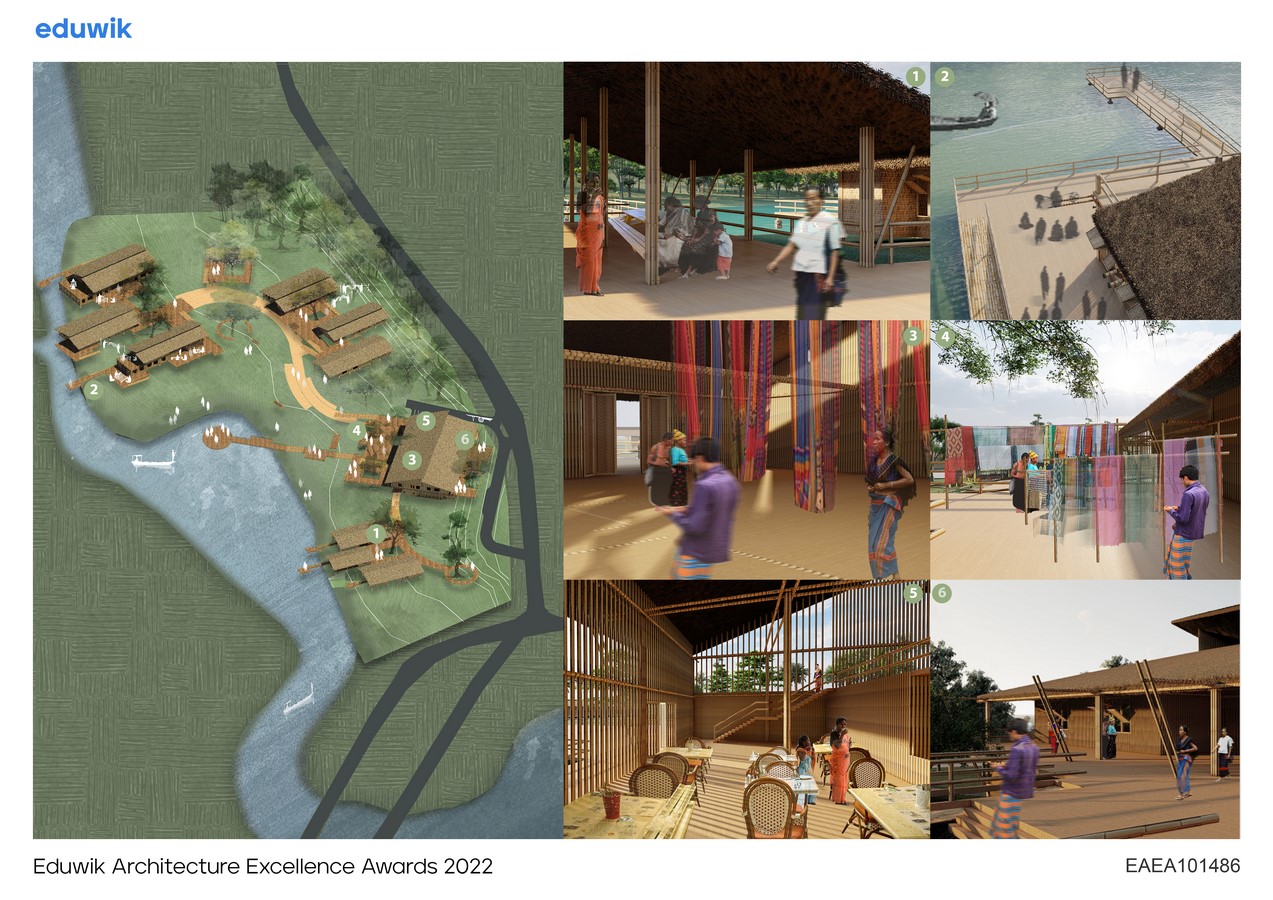
Backstrap loom, also known as Bain, is a tradition that was once taught from generation to generation, since the 1500s when different ethnic groups started settling in the Chittagong Hill Tracts. The indigenous community wove their own clothes but as the Bengali population rose in these areas, the Bengali costumes started being favored instead of the indigenous ones. Consequently, Bain slowly became a skill not honed by many. While the newer generations are losing touch with Bain, the older generation of weavers are giving up on it due to the intense labor it requires, the low economic pay-off, as well as the problems they have marketing it.
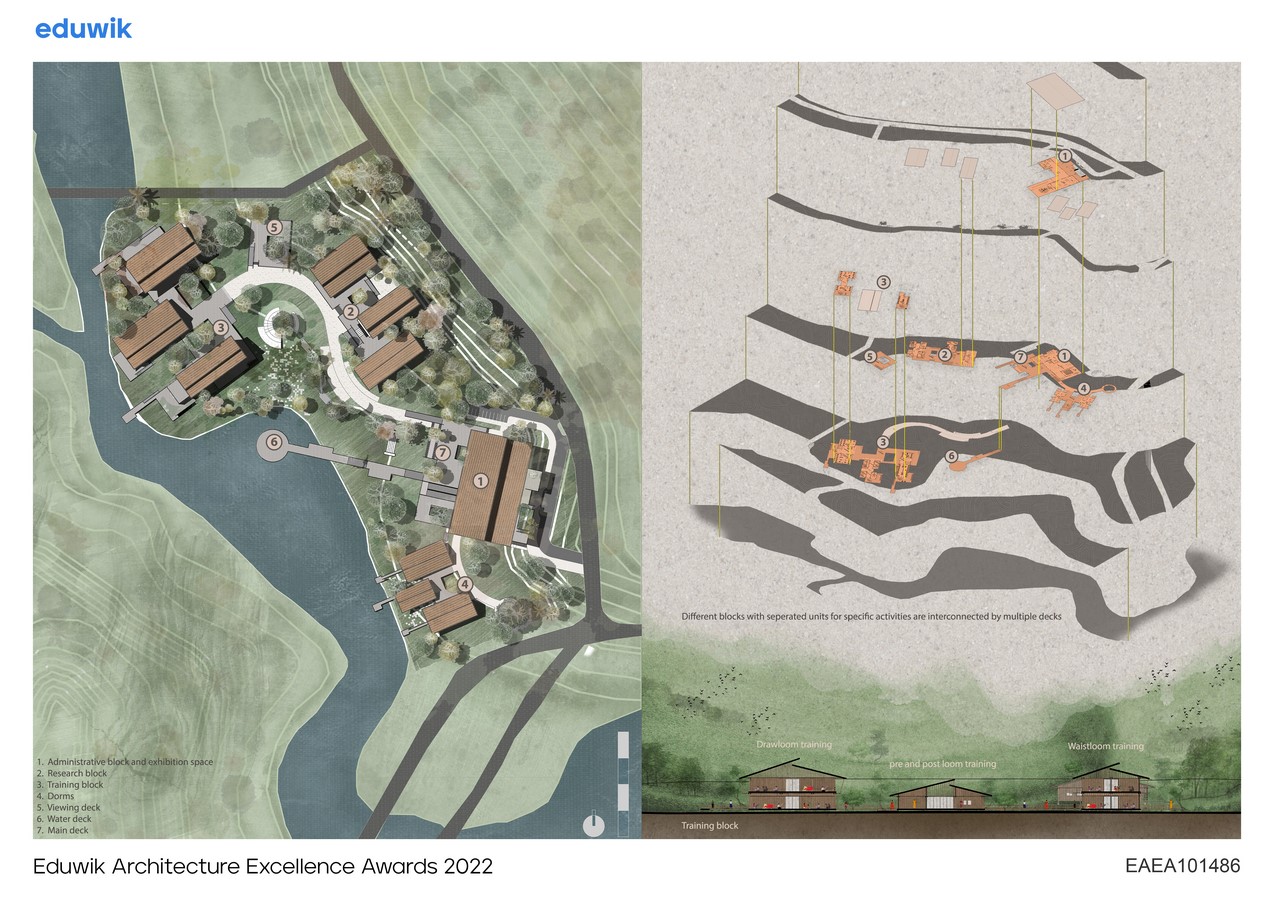
The intricate art of weaving also requires the recognition it warrants as a form of art in order to preserve it. The amount of finesse and artistic brilliance that handloom textiles possess are unmatched by any other. However, if efforts aren’t made to give it such acknowledgements, the ongoing social and economic change will cause future generations to consider other sources to earn a living. Thus, the need arises for such a project which can ensure the creation of a training system that allows weavers to venture further on their own while simultaneously securing a place for this craft in the future through research.
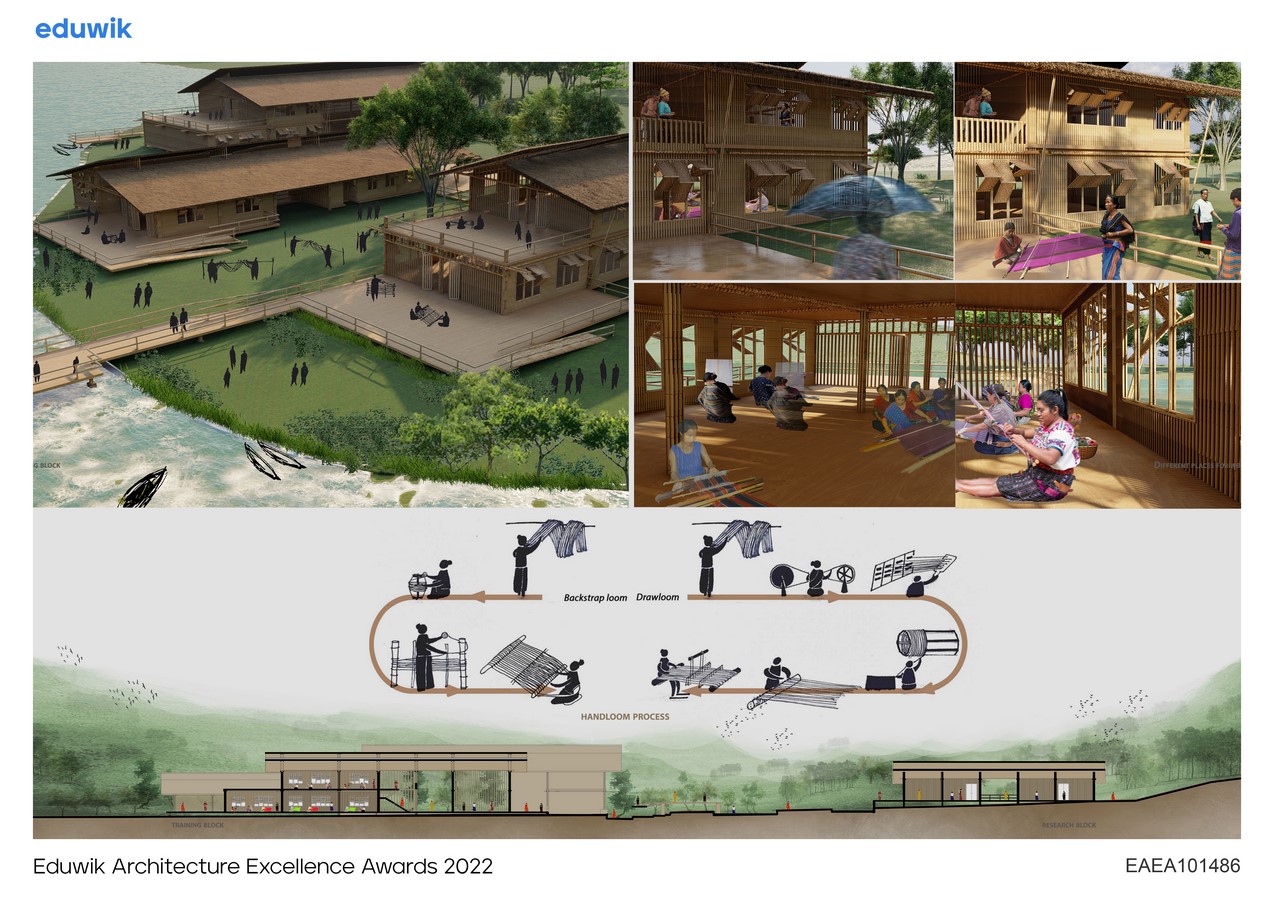
The act of weaving is a social activity as much as it is a cultural one. From weaving during the Buddhist festival of ‘kathin chibar daan’ to weaving in raised bamboo decks while chatting with the neighbors, it can practically be seen as an extension of socialization. In this design, the traditional arrangement of bamboo decks has been incorporated into the public zones as a nod to the traditional building typologies which in turn enhances the social element of the space. The ultimate goal goes far beyond the initial aim of ensuring a livelihood for many. It’s about keeping the culture alive through these efforts so that its value as an art form is reestablished.

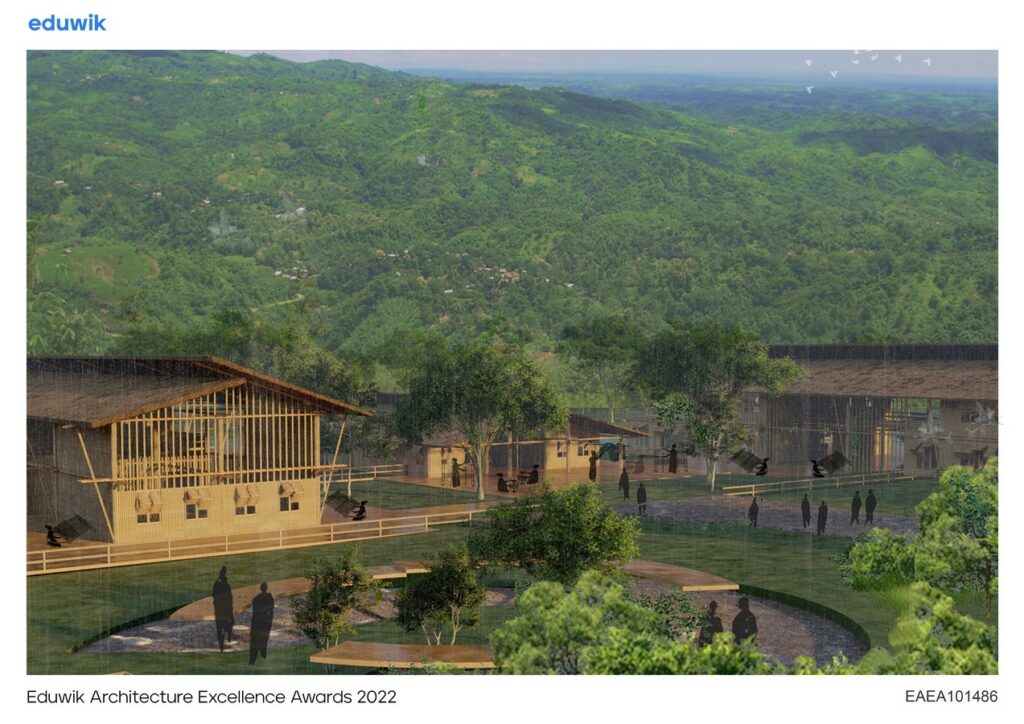

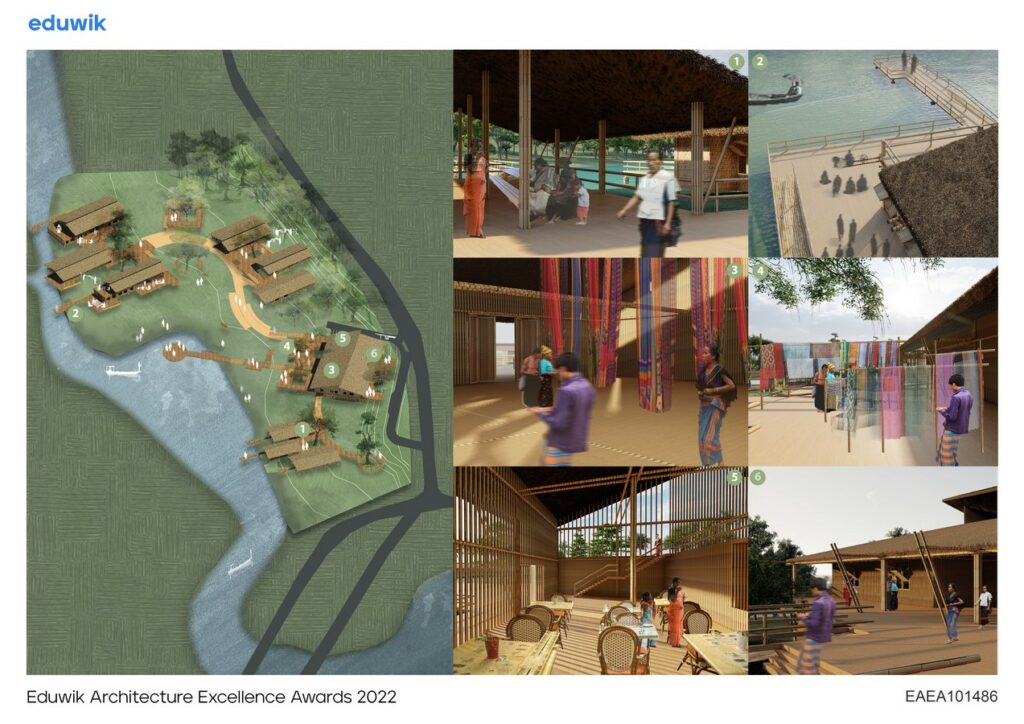
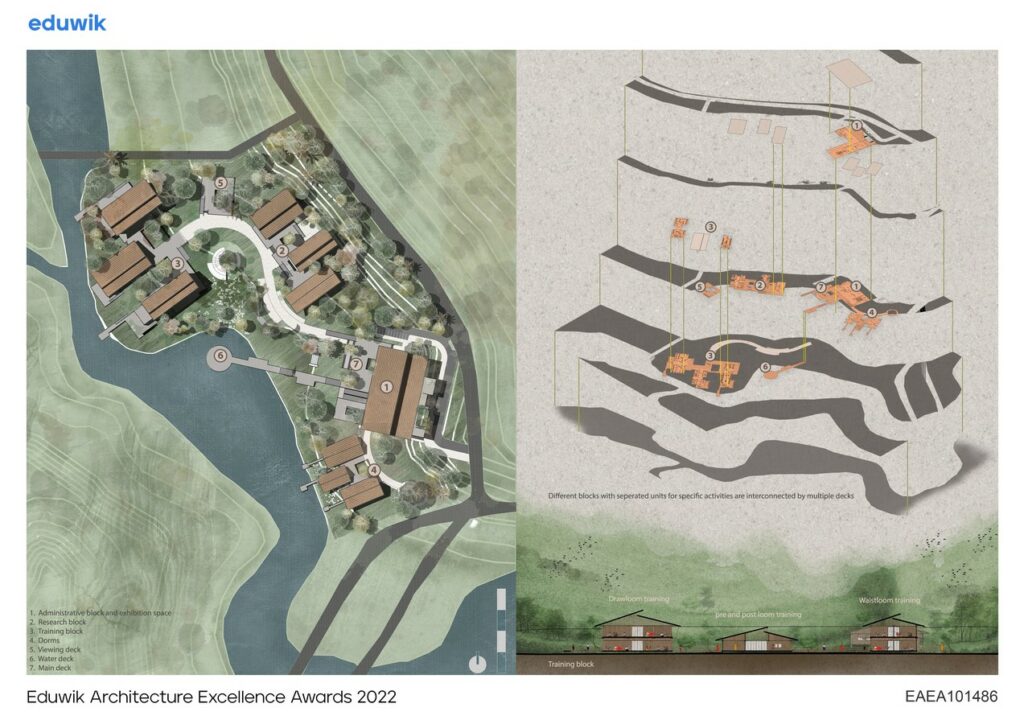

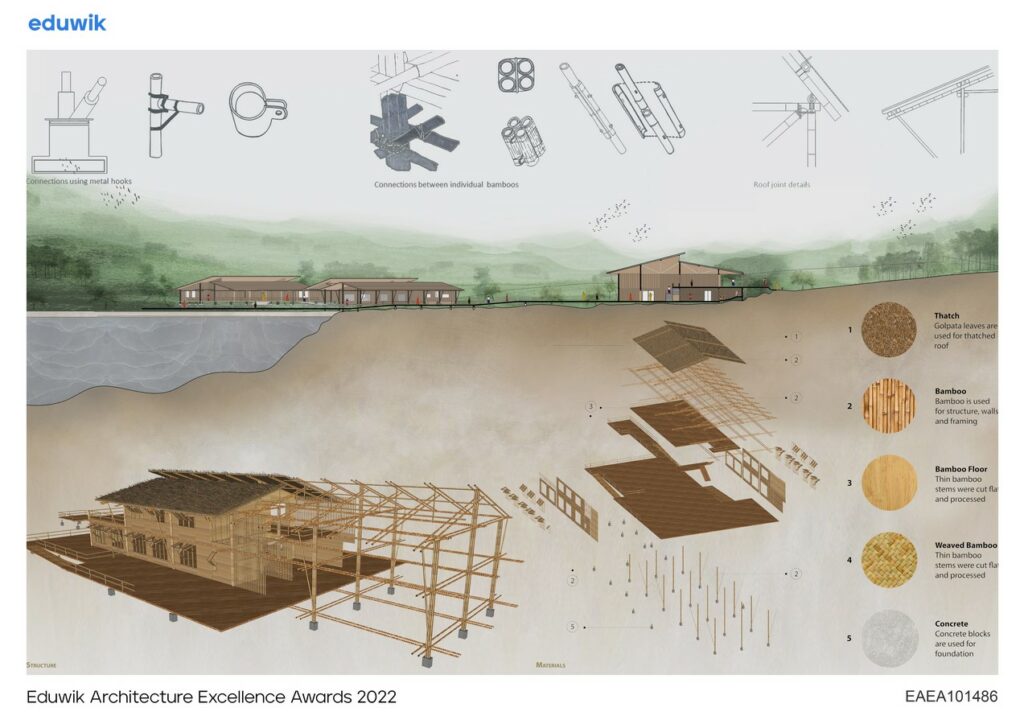

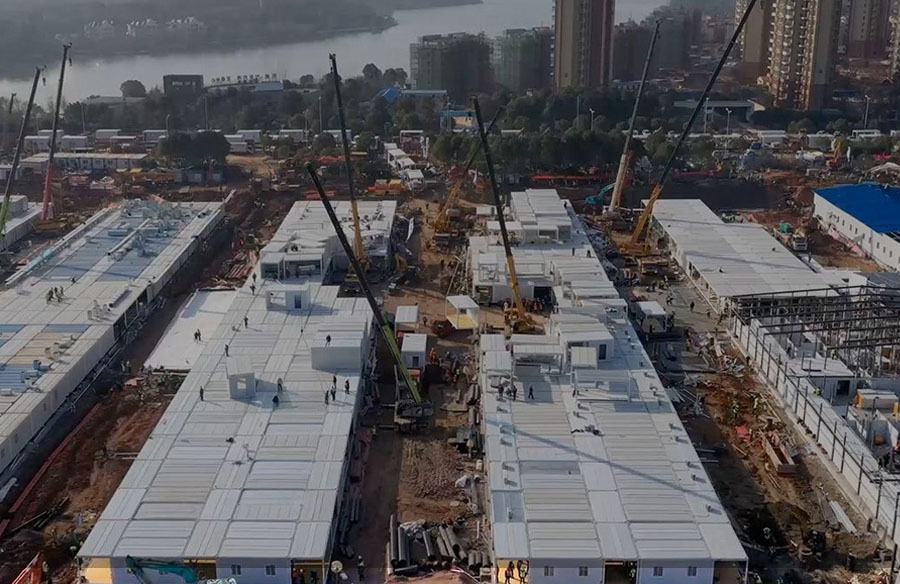



Responses